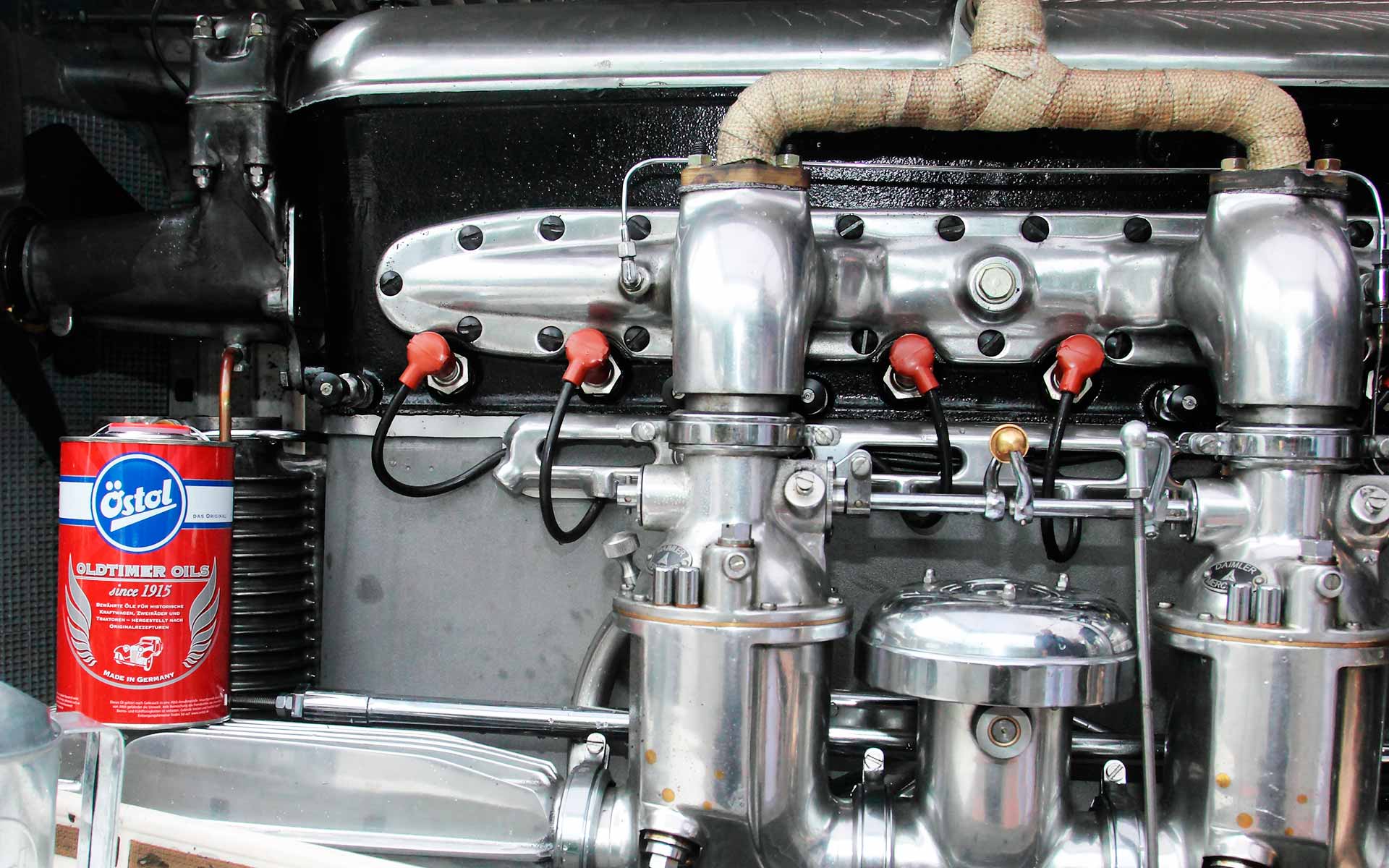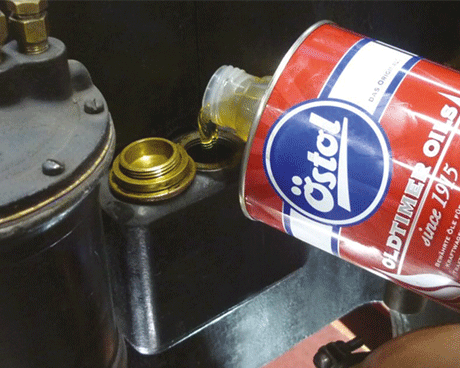


More than two thirds of German classic car drivers use unsuitable engine and gearbox oils. Many half-truths about the quality and use of lubricants circulate on Internet forums and blogs, and they can even be found in print media and on television. It is a common misconception that the quality of a lubricant can be judged solely on the DIN or API classification. Moreover, numerous product tests are based only on fresh oils, which are examined at a laboratory.
Get your information first hand from the manufacturer! Our team of experts has summarised a few points for you. If you have any more questions about our products, we will be happy to help.
To the contact formIt is a common misconception that the quality of a lubricant can be judged solely on the DIN or API classification. Moreover, numerous product tests are based only on fresh oils, which are examined at a laboratory. These tests ascertain conformity with DIN, API or ACEA, i.e. whether a lubricant is within the required specification in its fresh condition. However, this is just a snapshot of the new condition and does not allow substantiated conclusions about the shearing behaviour (the change in viscosity when influenced by temperature and pressure), the quality in relation to useful life, heat resistance, abrasion and dirt absorption behaviour. And this does not even include the raw material origin or even environmental aspects in production and distribution up to waste oil collection. This procedure is similar to a submission for MOT testing. A vehicle that has passed its MOT test is currently approved for participating in public traffic. Another 500 km later, that may no longer be the case. On a car, defects often become evident in the driving characteristics, noise or are simply visible. With engine and gearbox oils, poor quality and stability of lubricants are not detected straight away. Even a professional can only recognise the quality using laboratory analysis methods. Nevertheless, the engine, gearbox, surfaces and seals will suffer. These visible signs will only become evident over time, though. Depending on vehicle load and usage, expensive long-term damage can occur which could have been avoided with proper use of appropriate lubricants and filters.
The quality of a lubricant is determined first and foremost by the raw materials used. The main components of a lubricant are the base oils. The type and quantity of the base oils in a product determine viscosity temperature behaviour, oxidation resistance and responsiveness of additives. In the field of base oils, there are various qualities and places of origin. In addition to primary distillates, the market also offers re-distillates which are prepared from waste oil. High quality base oil with the required, long-lasting properties has its price. Oest uses only top quality for its products.
Additives are blended into a base oil to better adapt the lubricant to specific requirements, such as shear behaviour. Suitable additives influence viscosity stability, sludge-carrying capacity, water resistance and abrasion resistance. A wrong or too highly concentrated addition of additives may also have a negative impact in the long term and, for example, destroy seals. Caution is particularly advisable with seals of an older design. The materials used then are not as resistant to chemicals as modern sealing materials. There is a fine line between adding too little or too much. Seals should ideally 'swell' a little but should never 'erode'. The interaction, i.e. the compatibility of individual components with each other – from the base oil to each individual additive – is crucial.
A good lubricant proves itself only in every day usage. The majority of lubricants withstand a few hundred kilometres and retain their properties. Then the wheat is separated from the chaff, and this is exactly when the quality of raw materials used and the manufacturer's expertise and experience become fundamentally important. Even if a vintage car only covers 1500 kilometres per year, an oil that complies with the standards but is poor in terms of quality can cause considerable damage. Many vehicle owners can reduce long-term repair costs by using the right lubricant and adhering to the maintenance intervals optimised to their own usage patterns. Because oil loses its properties over the course of time through an ageing process – even with low mileage. Sadly, lubricants do not make a vehicle look better. For this reason, and due to ignorance, many vehicle owners (and workshops) try to save money by not using high quality lubricants and adapted oil filters. But if you want to keep your car and maintain and increase its value over many years, these savings are the wrong choice.
More likely to be rare, but still worth mentioning: check whether the lubrication circuit of your vehicle contains non-ferrous metals. If these metals have been used, e.g. in the gearbox, only oils with a rating up to API-GL3 may be used, otherwise the non-ferrous metals will be affected and then corrode.
In addition to the quality of the raw materials used, expertise and experience also play a key role in relation to labour and production. Pure retailers do not develop their own products. But there are also differences between manufacturers too. Only fully integrated manufacturers are responsible for everything in-house, from their own product development to raw material selection right up to certified quality management in production and logistics. Economic and ecological aspects play an increasingly important role in product selection. Lubricants are chemical products that are first of all harmful to nature and living beings. A high level of awareness and great responsibility from all suppliers in the process chain have proven necessary to have a sustainable and positive impact on the carbon footprint of a company's own product. Oest only uses raw materials from accredited suppliers in Europe to manufacture its Östol Oldtimer Oils. Regular internal and external audits ensure compliance with the stringent environmental and quality requirements.
And finally, there is the aspect of social responsibility. Oest manufactures its entire range of lubricants for cars, tractors and motorcycles exclusively in Germany. The company, which was founded in 1915 in the northern Black Forest, runs a state-of-the-art research and development laboratory with various test beds at its site in Freudenstadt.
Interested classic car lovers are welcome to visit the mineral oil factory and the laboratory during a club outing, upon prior arrangement. Östol is present at many important classic car shows, rallies and events. A good opportunity to learn more about engine oils. In addition to this, our team of experts is always available for an individual consultation.
The Östol rally team is also based at the Freudenstadt site. Is is run by volunteers who love of classic cars and maintain our vehicles, take part in trips and organise visits to clubs and exhibition. The fleet includes a VW T2A Östol Service Bus, a Ford Eifel Roadster Karmann, a Jaguar E-Type Roadster Series II, a Ford Taunus, an Opel Admiral, a Morris Minor 1000, a Mercedes SL 190, a Porsche 356 as well as various tractors and NSU motorcycles. Among other events, Östol takes part in the Retro Classics at Stuttgart as an exhibitor.